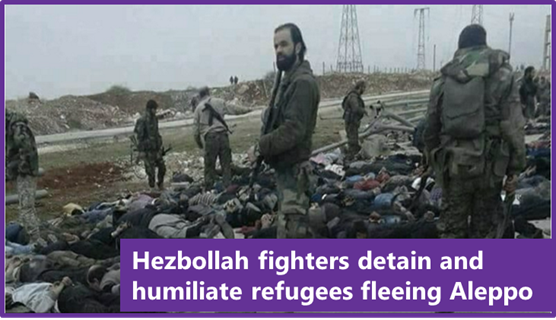Iranian Forces Deployed in Syria
Iranian military intervention in the Syrian conflict began in late 2011 and early 2012, a few months after the outbreak of the rebellion against the Assad regime. In its first stages, this intervention had a low profile. Iran provided the Assad regime with financial aid, arms shipments, and communications jamming equipment. As fighting grew gradually more intense, Iran dispatched a few hundred officers of the Quds Force and senior Hezbollah operatives as military advisers and planners.
Iranian involvement significantly escalated in mid-2014 after the rise of the Islamic State in Syria and Iraq and the subsequent weakening of the Assad regime. Iran sent thousands of fighters from various military organizations to fight in Syria under Iranian leadership.
Iran's operations in Syria are orchestrated by the Quds Force. Direct involvement by Iranian forces consist of two separate contingents: the first one consists of exclusively Iranian forces, based on the ground forces of the IRGC. The second is a smaller group of units from the regular Iranian army, Artesh, which began arriving in Syria in early 2016.
Iranian fighting forces in Syria grew to at one point as many as 2,500 men. Due to the fear of criticism at home over losses caused by an unpopular distant war, Iran gradually decreased the number of fighters in Syria, to less than a thousand today. These numbers mask the crucial role of Iranians as battlefield commanders of Syrian and Shiite militias, as well as the role of Iranian units in bitterly contested fighting.

Foreign Shiite Militias under Iranian Leadership
Iran's crucial battlefield support of the Syrian regime is by Shiite proxy forces, some led by IRGC officers.
Iran prefers to pursue its security interests by supporting proxy forces, which limit the risk of becoming involved in direct fighting. Iran porovides a varying degree of support to a number of organizations throughout the region. In the case of some of the militias operating in Syria, Iranian support is comprehensive: Iran supplies the manpower, training, equipment, financial support and battlefield leadership.
Iran's proxy network in Syria grew as a leading instrument of its involvement in the Syrian conflict. At first, IRGC officers that were sent to reorganize parts of the Syrian Arab Army (SAA) created local militias. Later on, foreign Shiite militias, most of them comprised of Iraqi fighters, were brought to Syria under the leadership of the IRGC. The third level of involvement came with the beginning of cross-border operations and campaigns by Lebanese Hezbollah in the spring of 2013. After initial successes near the Lebanese border and around the Shiite shrines in Damascus, Hezbollah operations expanded to all key areas of Syria.

![]()
Hezbollah's presence in Syria at its height was believed to amount to some 8,000 men (40 percent of the organization's active manpower). Hezbollah’s experience and discipline helped it achieve greater success than the regime’s army, especially in urban combat. Hezbollah fighters won crucial battles for the regime, changing the course of the Syrian conflict.

Iran claims that the Shiite fighters coming to Syria are motivated by Iran's supreme leader, Ayatollah Ali Khamenei's call to “fight in Syria [..] To protect the holy sites.” However, Iran backs Khamenei's call with regular salaries and even some compulsion. Deprived minorities within Iran's borders, such as the Afghan refugee population, are sent to fight for the promise of a regular salary and permanent status for their families. Such Afghan Shiites are sent to join the Fatemiyoun Brigade or Hezbollah Afghanistan. According to some reports, Iran pays salaries to Shiite mercenaries fighting in Syria amounting to approximately USD 100 Million annually.
Iran's proxy forces, originally formed as support units, have gradually increased in numbers and importance, becoming crucial for the Assad regime’s survival. Some assessments even say that the number of foreign Shiite militants in Syria exceeds that of the soldiers in the Syrian Army. It is expected that these fighting elements would not disband and disappear, even after an eventual triumph by the regime and its allies. Experience from other conflicts (such as the Afghan civil war) suggests that they would be the source of instability and a strong lever for Iranian influence for the foreseeable future.
Militias involved in Syria, such the Iraqi Harkat Hezbollah al-Nujaba, have already stated their intention to fight Israel by creating a "Golan Liberation Corps." Hezbollah leaders have also claimed that "thousands of Shiites" from all countries would assist the organization in case of war with Israel.

